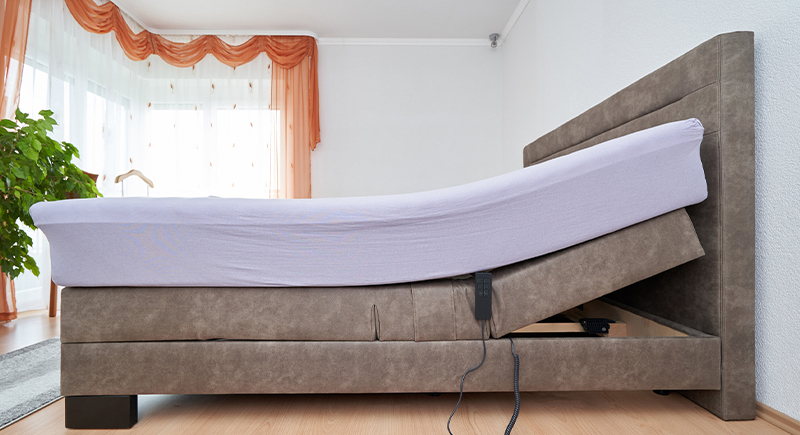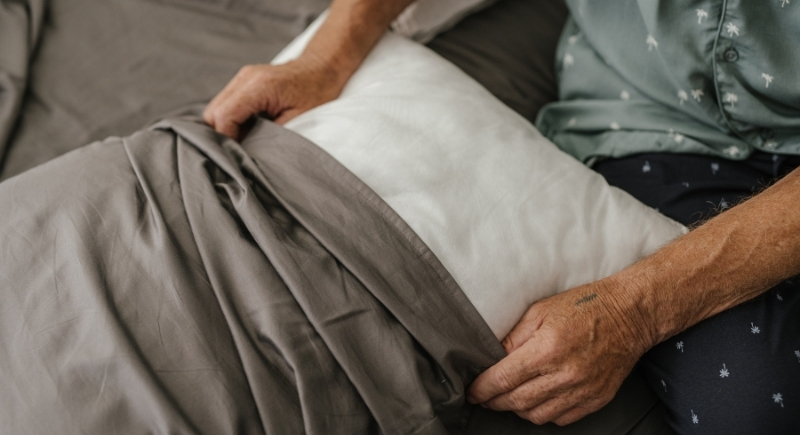Want the Coziest Bed? Here’s How to Get It Right
For most people, a cozy bed means soft sheets and pillows you can sink into, but comfort starts earlier than that. The way the bed fits into the room sets the tone. A headboard that frames it, lamps that dim instead of glare, and a space free of clutter all shape how relaxing it feels the moment you walk in. Those small choices around the bed are what set up that first sense of ease.
Only after that backdrop is in place should the attention shift to the bed itself. Layers of blankets, a mix of textures, and fabrics that feel good against your skin turn it from something that just looks nice into a spot that feels right to rest in.
Start With a Supportive Base

Image via iStockphoto/Pridannikov
We all know the mattress carries the weight of the whole bed. Without it, you’d just be lying on a hard frame or whatever surface happens to be underneath. For this reason, experts suggest aiming for a balance between softness and support so your body feels steady instead of strained.
This is where adjustable mattresses come in, which let you change firmness or raise your head. As a result, they can ease snoring and improve breathing. If replacing the whole mattress isn’t realistic, a topper can make a big difference. Featherbeds, memory foam pads, and hypoallergenic fills all ensure cushioning and extend comfort.
Choose Sheets That Work for You

Image via Canva/Africa images
People often assume a higher thread count automatically means better sheets, but that isn’t the full story. A range between 300 and 400 usually gives the right mix of plushiness and breathability.
At the end of the day, what matters more is fabric. Linen and cotton percale stay crisp and cool, which makes them ideal for hot sleepers. Meanwhile, flannel and sateen bring warmth and a smoother touch, which suits colder months. Some cotton weaves even grow softer after multiple washes.
However, natural fibers are always the smarter choice because they regulate temperature well and avoid the trapped heat and chemicals common in synthetics.
Layer for Comfort and Style
The way you layer bedding determines both ease and appearance. Start with fitted and flat sheets to create a smooth base. Add a quilt or coverlet for a lightweight structure, then place a duvet or comforter on top. Fluffing the duvet and folding it near the foot gives a tailored look without much effort. You can also use a throw blanket at the edge for texture and provide an extra layer when nights turn colder.
Pillows also play an important role here because a good setup tends to include two large ones for height at the back, standard sleeping pillows in front, and one or two smaller cushions as accents.
Keep in mind that the functional pillows should match your sleep style: cushioned for stomach sleepers, medium-density for side sleepers, and firmer for back support. Feel free to add decorative pillows too, as they bring personality, but there’s no need to overwhelm—three to five accents are usually plenty.
Keep Everything Fresh

Image via pexels/SHVETS production
You may already know that a cozy bed quickly loses its appeal when it isn’t clean. This is why sheets should be washed weekly, especially if pets share the bed. Hypoallergenic materials reduce dust and dander buildup, which can otherwise disrupt sleep.
Pillowcases also deserve the same schedule, while duvets and blankets benefit from regular fluffing. And making the bed each morning is a small habit with a big payoff, which turns the room into a restful retreat at the end of the day.